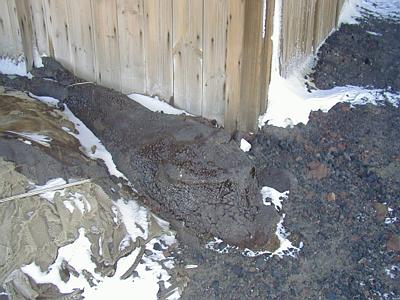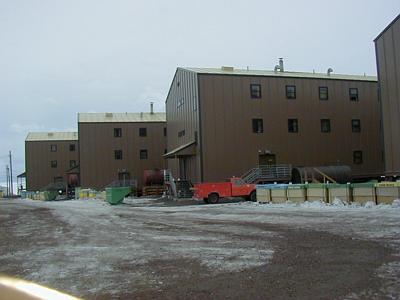
|
|
9 November, 1999
McMurdo Station, Antarctica Tuesday
Another beautiful day in McMurdo! The winds had died down and the sun shone
all day! We busied ourselves unloading boxes and crates and setting up the
laboratory. We have one side of a very nice laboratory, a walk-in cold room
that is kept at 4 degrees Celsius, and we will share laboratory facilities
for gas chromatography and radioisotope work (I will explain these later).
We attended a lecture about waste management. It was explained to us that
residents of McMurdo are required to place trash in specifically marked
containers in the laboratory, the galley (where we eat), the dorm rooms, and
in the outside trash dumpsters. This is in accordance with a U.S. law
called The Antarctic Conservation Act of 1978. Some of the categories of
trash include aluminum, clothing, construction debris, burnable waste, food
waste, heavy metals, light metals, white paper, plastics, and wood. In a
later journal I will talk about this in more detail.
I would like to write a few lines about McMurdo Station. The station was
established in 1956. McMurdo is like a small town. It isn't very pretty to
look at but it is functional! There are dormitories with names like Mammoth
Mountain Inn and Hotel California, a galley, a post office, a hospital, a
gymnasium, a smoke-free club (Gallagher's), a smoking club (Southern
Exposure), a coffee house, a chapel, many communication centers, fuel tanks,
a power plant, and other buildings used to store and distribute materials
needed by the residents. There are also helicopter pads and, when the sea
ice melts in December, resupply vessels can dock. For scientists, the most
important building is Crary Laboratory. This is where we will spend much of
our time.
Answer to the last question about dirt and soil: To a scientist, dirt and
soil are different things. Outside dirt results from the weathering of
rocks. This can occur when water in rock freezes and thaws and makes the
rock break apart. In simple terms, soil results from the decay of once
living material such as plant and animal remains. Most of Antarctica does
not contain dirt or soil. Only about 2% of the continent is ice-free.
Because Antarctica is so dry (remember that Antarctica is a desert), the
remains of dead organisms do not decay. Look at the photo of the mummified
seal.
Today's question: What kinds of seals do you find in Antarctica?
Sharon
JUST FOR KIDS!!!!! It was another beautiful day at McMurdo Station,
Antarctica! The sun was shining and it was not very windy. We spent most
of our day unloading crates and boxes and setting up our laboratory. We
must have the laboratory ready before we collect our water samples.
I would like to tell you a little bit about McMurdo Station. The station
began in 1956. It is like a very small village. People sleep in big
buildings that have bedrooms and bathrooms. We eat in the galley. This is
like the cafeteria at your school. There is a post office, a small
hospital, a gymnasium, three buildings where people go to relax, play games,
and talk. There is a church. The most important building to a scientist is
Crary Laboratory. This is a big building with many individual laboratories.
There are also helicopter pads and a dock for boats. The dock is only in
operation when the sea ice is melted from December to February.
Answer to the last question about dirt and soil: To a scientist, dirt and
soil are different things. Outside dirt is made from breaking up rocks.
This happens when water inside the rock freezes and thaws and makes the rock
break apart. Soil comes from the decay of dead plants and animals. Most of
Antarctica does not contain dirt or soil. Only about 2% of the continent is
ice-free. Because Antarctica is so dry (remember that Antarctica is a
desert), the remains of dead plants and animals do not decay. Look at the
photo of the mummified seal.
Today's question: What kinds of seals do you find in Antarctica?
Sharon

Mummified seal outside Discovery Hut, McMurdo Station.

Dormitories at McMurdo Station. The dumpsters in front of the dormitories are for recycling. Note the unpaved roads.
Contact the TEA in the field at
.
If you cannot connect through your browser, copy the
TEA's e-mail address in the "To:" line of
your favorite e-mail package.
|
